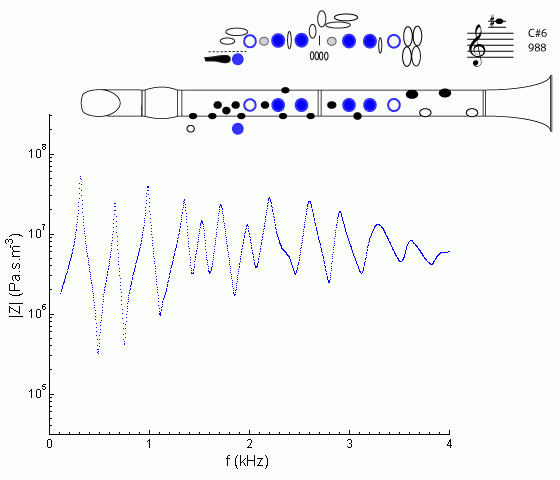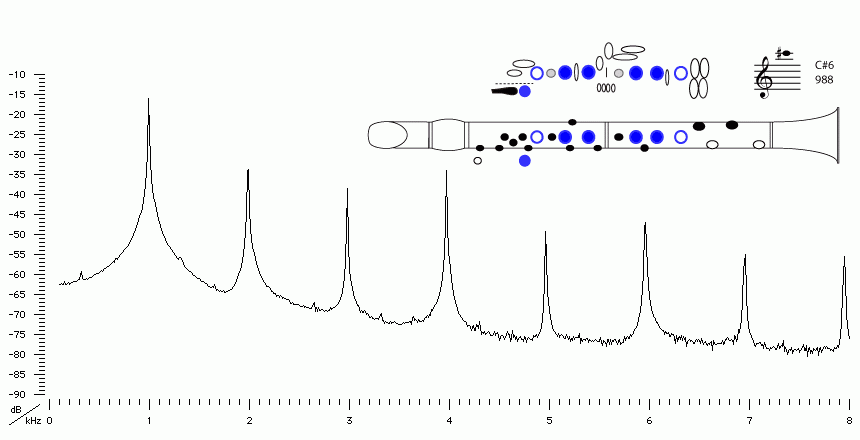| Acoustics of the clarinet |
Bb clarinet |
C#6 |

|
Fingering Acoustic schematic Non-specialist introduction
to acoustic impedance Notes are the written pitch. |
This is the lowest note of the altissimo register, which corresponds to the fifth harmonic of the chalumeau register. It is a major seventeenth above the related note (A3) in that register, and a major sixth above the note (E5) in the clarino register. The left hand index finger hole is left open (some players uncover the hole only partly) and used as a second register hole. The first register hole (the speaker key) primarily lowers and displaces the first peak (ie the difference between A3 and E5, which have similar fingerings) but this hole is too small to affect the high frequencies. The new, larger register hole reduces and displaces the second peak (compare this curve with that for E5). Thus one can play the note associated with the third peak with (relatively) little danger that it will drop down to one of the lower peaks. For more detail on this effect, see register hole.

Sound spectrum
of a Bb clarinet
played using fingering for C#6.
For more explanation, see
Introduction to clarinet acoustics
|
Contact:
Joe Wolfe
/ J.Wolfe@unsw.edu.au |